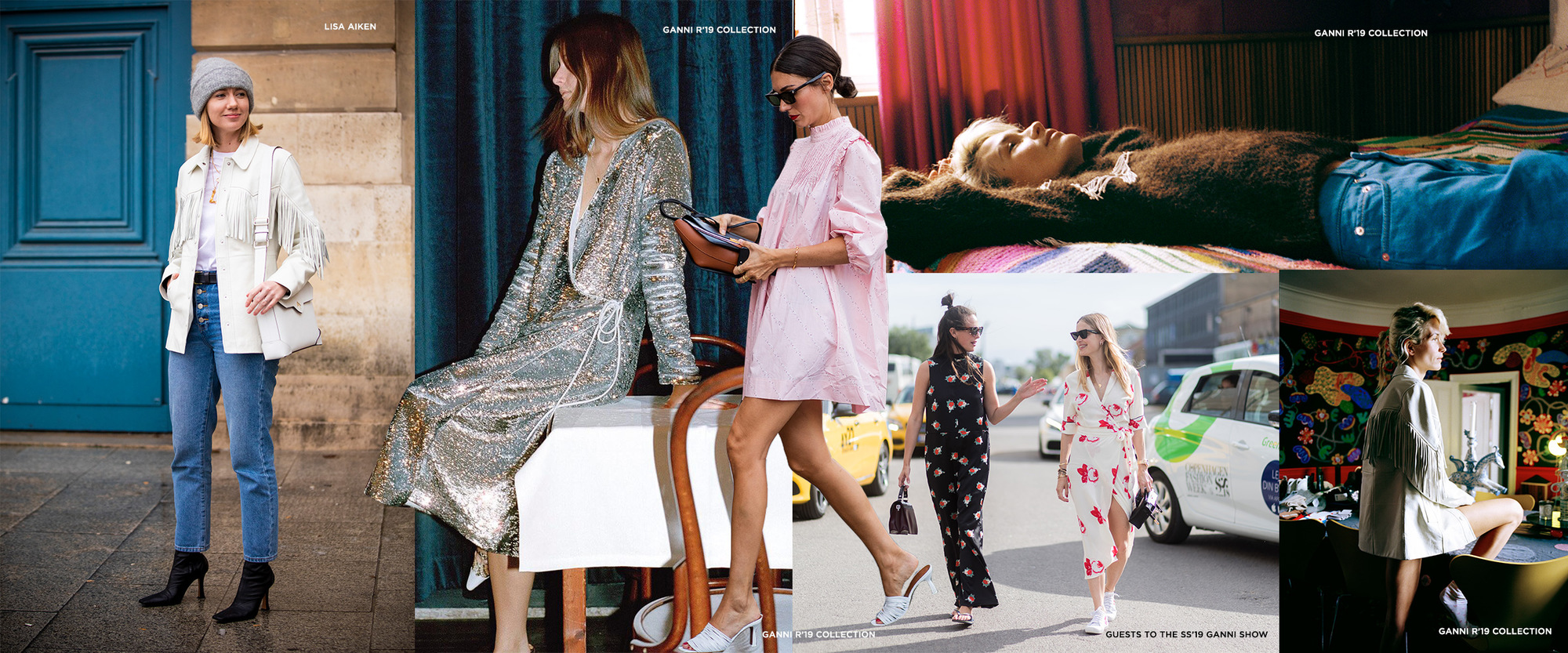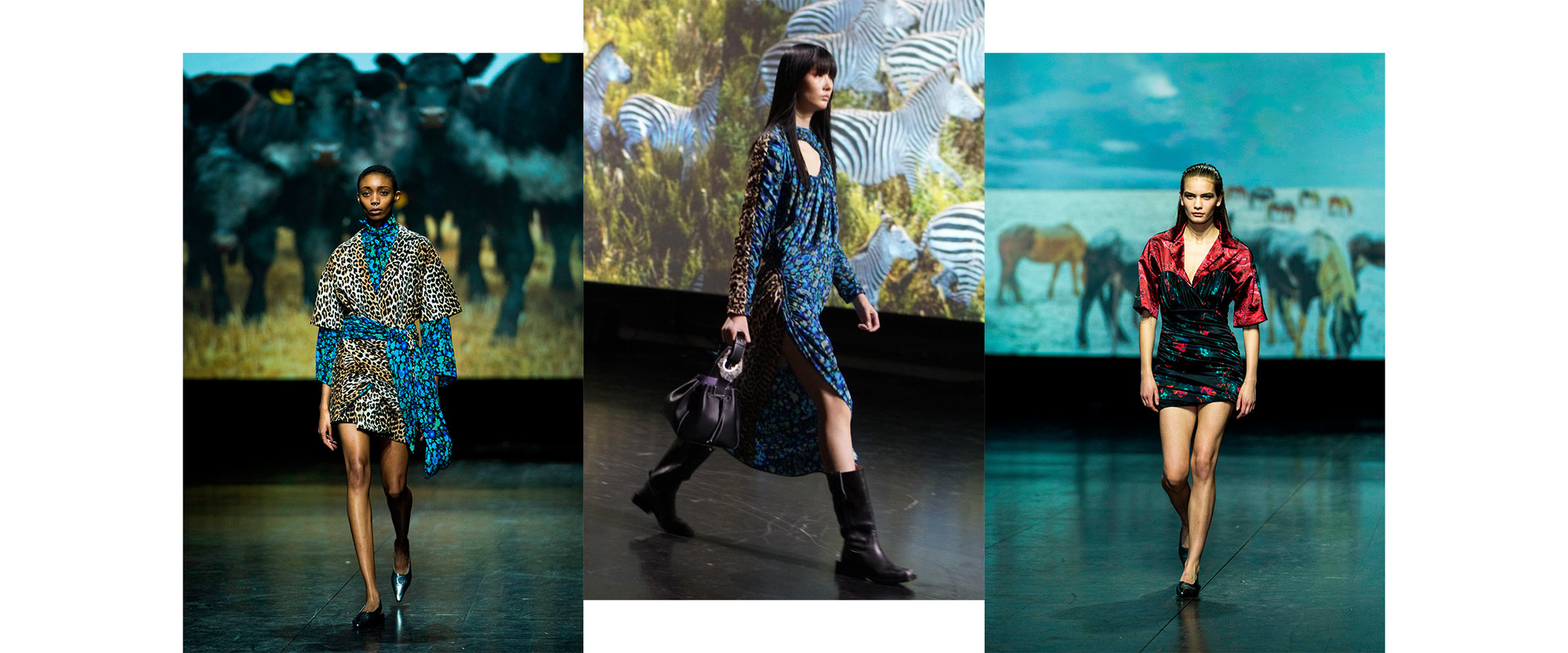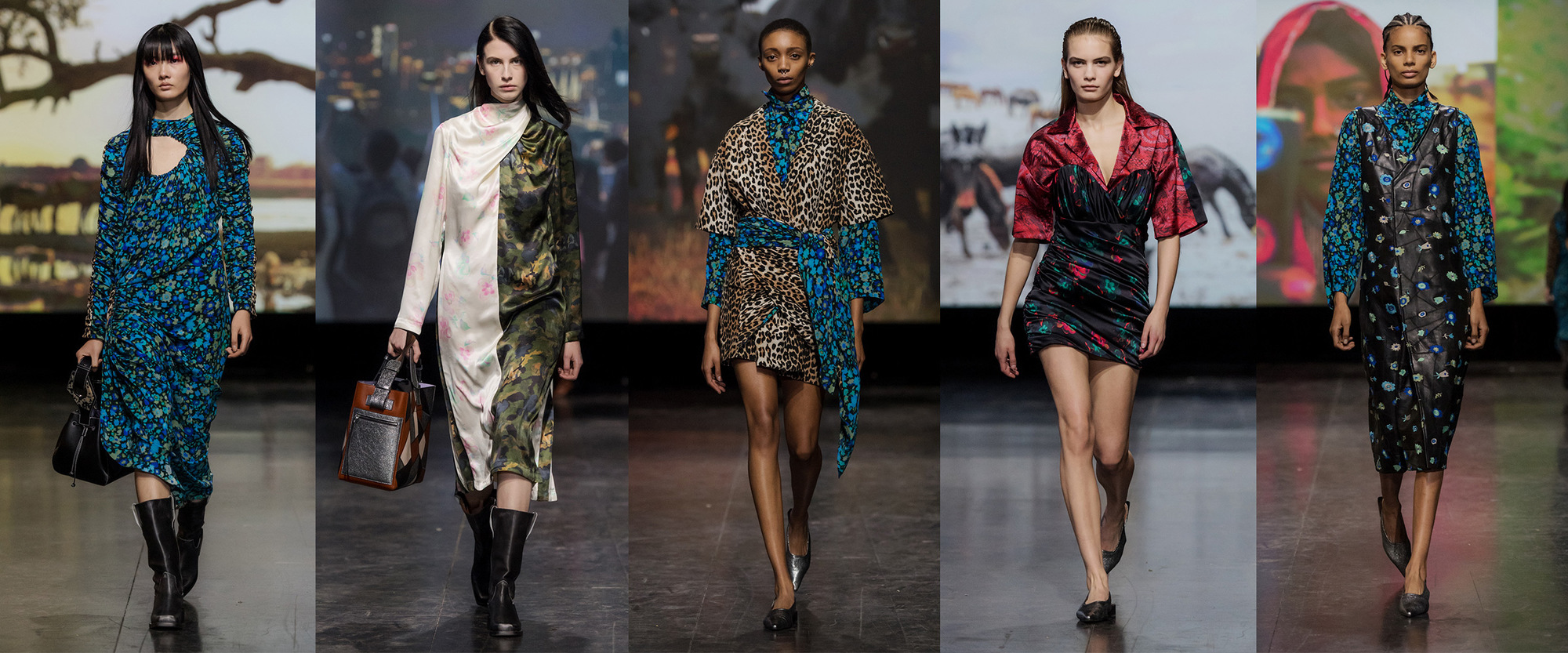
Copenhagen fashion is currently having a moment. In fact, it’s been having a moment for quite some time now, thanks in large part to Ganni. Credited with reinventing Scandi style, the Copenhagen-based label was founded in 2000 with a focus on cashmere. But it wasn’t until Ditte Reffstrup and her husband Nicolaj Reffstrup stepped in—as creative director and CEO, respectively—that it was reimagined into the playful, feminine brand worthy of cult status that it is today. By 2015, they could already count scores of It girls among their fans, and when #Gannigirl launched (after Kate Bosworth and Helena Christensen showed up to a lunch date wearing the same Ganni jacket) it became the hashtag heard around the world. But there’s more to the label’s story than street style success—namely the talent of a designer who doesn’t chase trends, instead designing instinctually to capture the not-quite-traditionally-Scandinavian style that she and her friends have always embraced. With her latest collection having just made its runway debut (and available to shop now on Moda), we met up with Ditte to bring you the story you likely haven’t heard, that of the woman behind the buzzy name.
Rachel Hodin: I read the following on Vogue: “When Ditte Reffstrup was growing up in the Danish countryside, she and her friends would listen to Nirvana and smoke inside the barracks dotting a nearby beach.” Can you describe your upbringing, and how it informed your sense of style?
Ditte Reffstrup: I’m from a small town in Jutland called Hirtshals, a fishing village close to the sea. I’ve always loved expressing myself, standing out and dressing up. As a child, I looked pretty out-there in the school yard; when other girls were wearing pretty dresses, I was a dressed flamboyantly like Bananarama. Fashion has always been a way to express myself.
R.H.: Before becoming Ganni’s Creative Director, you were a buyer. What lessons did you learn from that experience that you use today?
D.R.: I learned a lot about what sells and what doesn’t. It comes down to making women feel confident.
R.H.: The brand has been celebrated for mastering the magic “got to have it” formula; in other words: Ganni creates pieces women intuitively want to wear. How are you consistently tapping into that sense of desire?
D.R.: I’m always driven and guided by a gut feeling. You’ve got to stay true to who you are. If you overthink it, it makes you stumble. I feel like I’m creating the pieces I want to wear myself—if I have no desire to wear it, then I start again.



READ MORE: Designer Spotlight: Victoria Beckham
SHOP MORE: The Pre-Fall '19 Collections